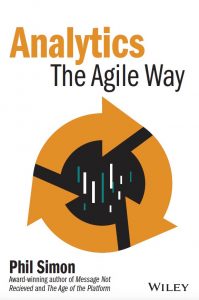Billy Beane attained fame in baseball and analytics circles long before Brad Pitt portrayed him in the 2011 film Moneyball. In fact, Beane was making quite the name for himself prior to Michael Lewis’s 2004 book of the same name.
It’s no overstatement to claim that, as general manager (GM) of the small-small-market Oakland A’s, Beane changed the game of baseball forever. Big-market powerhouses such as the New York Yankees, Boston Red Sox, and Los Angeles Dodgers could effectively print their own money. Not Beane. He had to compete with a relatively paltry annual budget of roughly $60M. That meant that he couldn’t even dream of chasing other teams’ pricey free agents. In fact, he couldn’t even afford to keep many of his own stars. Case in point: Beane had no shot of resigning all-star first baseman Jason Giambi in 2001. The slugger and later admitted steroid user upped with the Yankees for nearly $120M over seven years. Beane couldn’t justify spending nearly 30 percent of his budget on a single player—no matter how prolific.
Instead, Beane proved that invention is the mother of necessity. He famously plucked players off the scrap heap with untraditional skills. Can’t hit home runs? No problem. Can he frustrate opposing pitchers by being “a tough out”? Can he just get on base? He drafted players who “just didn’t look” like effective baseball players. His unorthodox methods angered many longtime Oakland scouts, men who had spent their careers watching players and developing a supposed eye for talent, not staring at spreadsheets. (The case study in Chapter 9 will have much more to say about resistance to analytics.)
You know how this story turns out. Michael Lewis doesn’t write a book about you that turns into a movie starring Brad Pitt if you failed miserably. Pretty soon, even big-market teams such as the Yankees and Red Sox were hiring their own analytics experts and, later, teams of experts. The Moneyball movement spread beyond baseball to all other major sports. In fact, analytics are starting to move from the back room to the field. In their 2016 book The Only Rule Is It Has to Work: Our Wild Experiment Building a New Kind of Baseball Team, Ben Lindbergh and Sam Miller note that:
 The Denver Broncos of the National Football League announced that the team’s director of analytics, Mitch Tanney, will break the front-office fourth wall in their upcoming games, speaking on a headset to head coach Gary Kubiak to offer his input on which plays the probabilities and percentages support. As managers increasingly come from cohorts that tend to be more perceptive to sabermetrics, it seems inevitable that something similar will happen in baseball.
The Denver Broncos of the National Football League announced that the team’s director of analytics, Mitch Tanney, will break the front-office fourth wall in their upcoming games, speaking on a headset to head coach Gary Kubiak to offer his input on which plays the probabilities and percentages support. As managers increasingly come from cohorts that tend to be more perceptive to sabermetrics, it seems inevitable that something similar will happen in baseball.
Today you’ll find examples of Moneyball in areas and industries without any ties to sports at all. Case in point: the U.S. justice system. In 2007, Anne Milgram became the Attorney General of New Jersey. In her words, she “wanted to moneyball criminal justice.” Yes, moneyball is now a verb.
This post is excerpted with permission from Analytics: The Agile Way by Phil Simon. Wiley and Sons, 2017.
If you're interested in sports analytics, you can download a new sports e-book. Or learn how the NY Mets have moved analytics from the field to the business office to improve game attendance.

